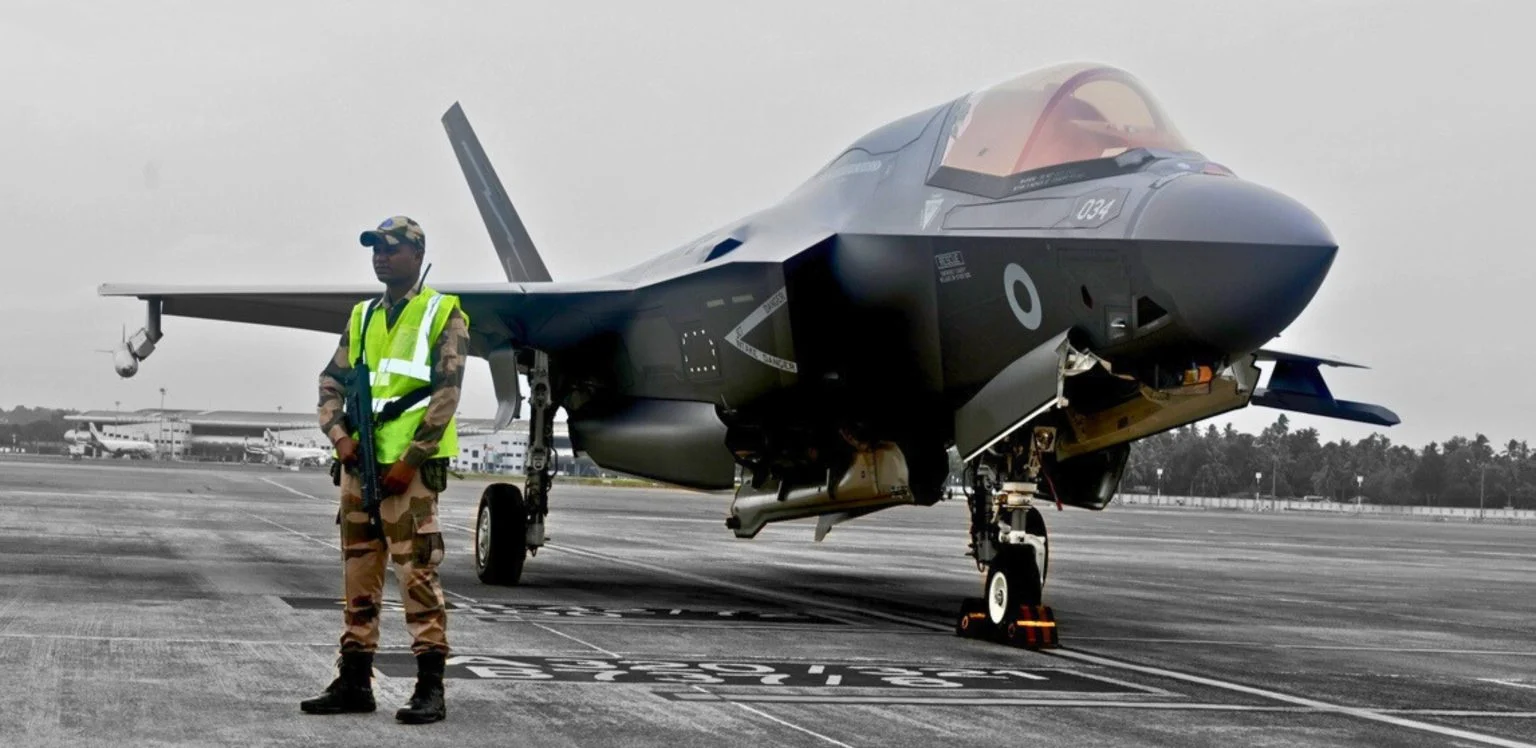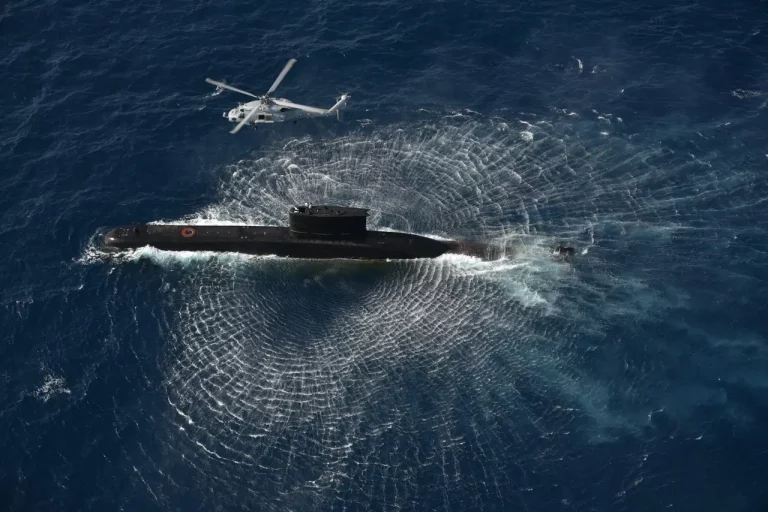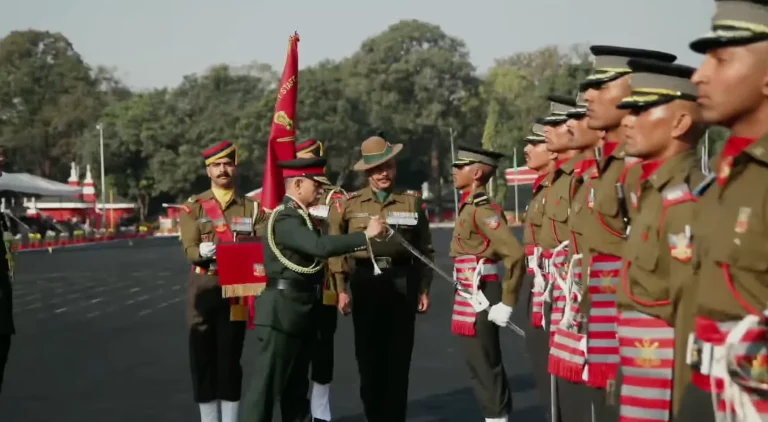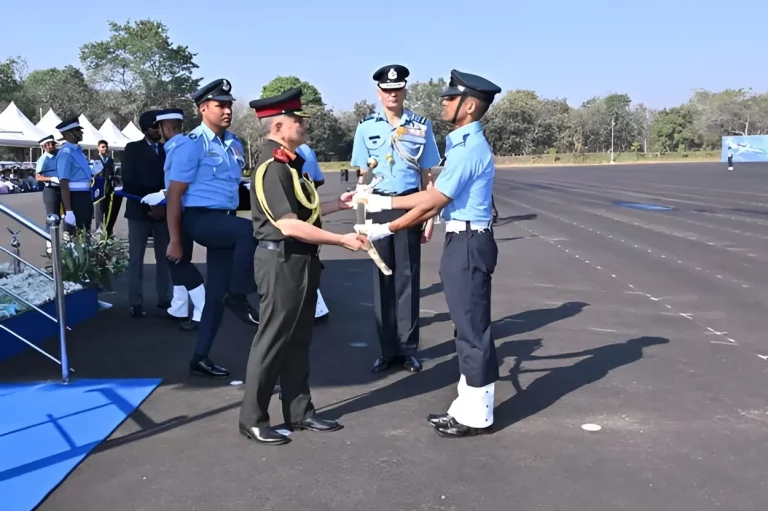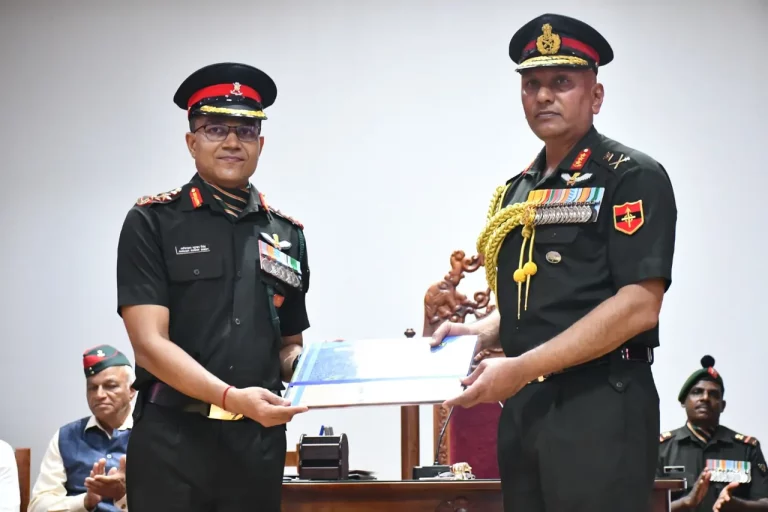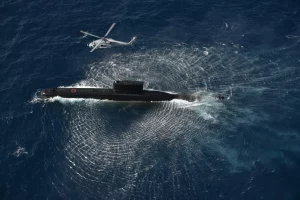A British Royal Navy F-35B Lightning II stealth fighter has been grounded at Thiruvananthapuram International Airport for nearly a week following an emergency landing due to hydraulic failure. Defence officials reported on Friday that a potential solution may involve repatriating the aircraft via military transport, as repair efforts have yet to resolve the issue.
The aircraft, part of the UK’s HMS Prince of Wales carrier strike group deployed in the Indo-Pacific, was engaged in routine flight operations outside Indian airspace when it requested an emergency landing on June 14 due to low fuel levels. This prompted an immediate response from the Indian Air Force (IAF) through its Integrated Air Command and Control System (IACCS).
Upon landing, the IAF provided essential refuelling and ground support for the fighter. However, subsequent attempts to return it to the HMS Prince of Wales were hampered by a critical failure in the hydraulic system, which is essential for the aircraft’s operations.
A maintenance team from the UK Navy was dispatched to Thiruvananthapuram to address the repairs onsite, but their efforts could not rectify the hydraulic issue. Consequently, a larger team is expected to arrive soon to conduct a more thorough diagnosis. If repairs are unsuccessful, the aircraft may be transported back to the UK using a military transport aircraft.
The presence of this advanced stealth fighter at a civilian airport has captured significant attention. Concerns regarding the sensitive technology within the aircraft have reportedly influenced the British decision to decline an earlier offer from Air India for hangar space, opting instead for more secure arrangements.
Throughout this process, the IAF has been actively supporting the recovery efforts, highlighting the robust military-to-military cooperation between India and the UK. This incident underscores the operational complexities and maintenance challenges associated with deploying fifth-generation fighter aircraft in distant operational theaters, where logistical support can present formidable obstacles.
